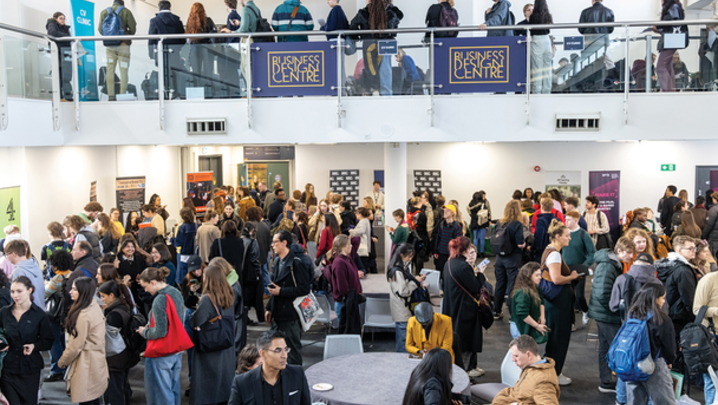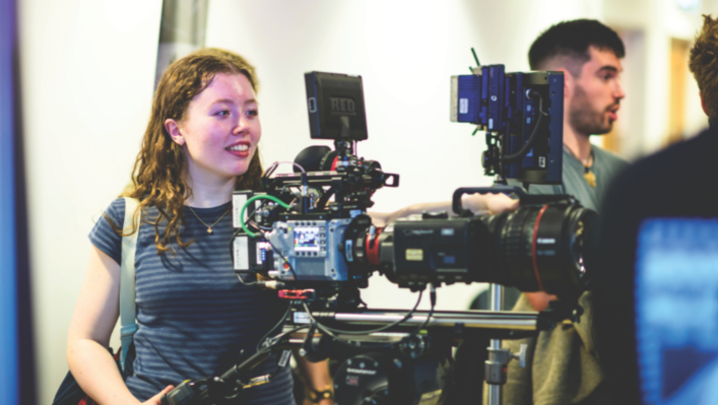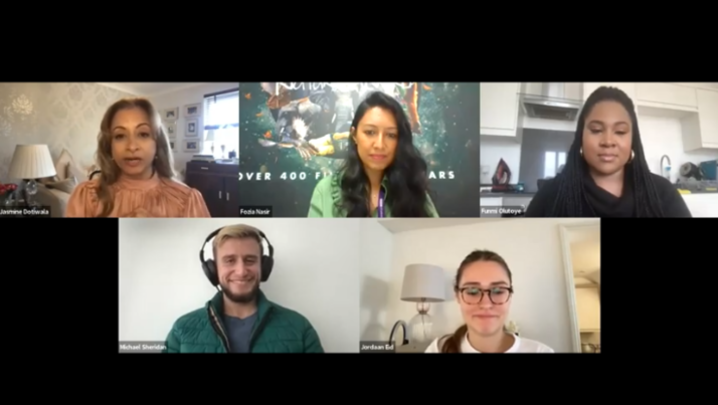The channel’s revamp of Married at First Sight is one of the year’s surprise hits. RTS Futures hears how it was done.
Critics might argue that the global reality show Married at First Sight makes a mockery of marriage. But, perhaps, behind all the make-up, fake tans, glamorous honeymoons and emotional drama sits a programme that, ultimately, provides people with the opportunity to find love and friendship.
An RTS Futures event in October heard how the UK version of the show, launched originally on Channel 4 in 2015, evolved in its latest, sixth series into a beefed-up incarnation on E4, where it has become the channel’s most successful show of 2021.
The format, which originated in Denmark, sees strangers matched by a panel of experts and married when they meet for the first time. In their old guise, UK series ran at most to five episodes and featured two to four couples.
The new version was stripped nightly and emulated Married at First Sight Australia, which was popular on E4 during lockdown, and had eight couples seeking true love.
Commissioning editor Lee McMurray revealed that he was anxious about whether the revamped show would be able to replicate the emotional impact of the Australian show, given the UK’s regulated broadcasting system.
“We can’t manipulate footage in the way that other territories can, so would we be able to achieve that level of emotion and drama? But, by God, we did,” he said. “I was pleasantly surprised. It was what kept people coming back for more. The cast always surprises you. It’s what keeps you on your toes.
“It’s great TV, but we’ve got to be mindful of the contributors’ emotions. They’re human beings. It’s important that we look after them and provide the support they need.”
Describing himself as “a conduit and gatekeeper for new ideas”, McMurray oversaw the switch of Married at First Sight from Channel 4 to E4.
He explained to RTS Futures that it was his job to sign off on the cast and crew, the format, the locations, and the final edit. His work also involved being aware of how the show would be scheduled, marketed and promoted. “My job is multifaceted and exhausting, but it can be a lot of fun as well,” he said.
After four series on Channel 4, McMurray and the production company, CPL, turned their attention to refreshing the show. The plan was to extend the run to eight episodes and revamp it to include a new matchmaking team. Then the pandemic scuppered these plans.
But the health crisis provided a blessing in disguise for the show, with Married at First Sight Australia’s lockdown success on E4 inspiring the new, 20-episode show that debuted in the UK this August, with an extra episode in which the couples reflect on their experiences.
As the session host, Radio 1 DJ Sian Eleri, pointed out, finding people to particate in a series in which they were expected to marry a total stranger looked, on paper, like “madness”. Was it difficult to find willing contributors?
It seems not. “We look for characters,” said Emma Pringle, who is in charge of casting and welfare on the show. “We look for people who are open and honest, engaging and articulate, and who can talk about their feelings. They have to be willing to be emotionally vulnerable and put themselves on the line by marrying a stranger.
“They also have to have a story – a reason why they’re there and what has driven them to the point where they want expert help finding love.… There’s a lot of processes they go through before they get to the altar.”
To help them psychologically, contributors are allowed to express their feelings in a safe space away from the cameras and, if necessary, they can talk to an in-house psychologist. “It’s important that they feel supported and heard,” said Pringle. “Our support doesn’t stop when the cameras stop rolling. If anything, it increases when the show ends. We take the care aspect very seriously.”
Moving the show from Channel 4 to E4 meant introducing a new visual style that was glossier and more cinematic, and less like a documentary, said series director James Kayler. He wanted Married at First Sight to look more like Love Island and Too Hot to Handle and thus appeal to E4’s younger demographic. Drones were used to shoot the wedding venues and marriage ceremonies.
Getting the emotional stories required “trust and tenacity”, noted McMurray: “You obviously want them to open up about their feelings.… They don’t just give it up to you on a plate. It requires skill and doggedness from the team.”
Story producer Philip Krstic said it was important to spend a lot of time with the contributors and have fun with them. “Most of the people who take part in the series want to have a good laugh and meet someone nice,” he said.
Casting researcher Izabela Garvan, who started her TV career as a runner at CPL, had the job of weeding out the potential contributors, initially via email and subsequently on Zoom. The process began last November. Further on in the production process, she helped source some of the locations and assisted Pringle in looking after cast members’ welfare.
The series featured the show’s first gay couple, Dan and Matt, who, unlike most Married at First Sight newlyweds, were still together at the end of the show.
“Since we first started making Married at First Sight, it has been an ambition to include a same-sex partnership and wedding,” said McMurray. “It’s hard to find people who want to go on this crazy journey and want to meet their future husband or wife at the altar. It’s quite a bonkers thing to want to do. When it works, it’s amazing and exciting.…
“We had a gay couple lined up for series 5 but one of them pulled out. It’s baked into Channel 4’s DNA that we champion diversity and inclusion.
“And it was important for us to normalise the validity and beauty of same-sex relationships and not make a song and dance about it.…
“I’m gay. If I’d seen that [the wedding of a same-sex couple] on telly when I was growing up it would have been great. To know that we were doing that for a generation of LGBTQ kids watching at home was important.
“We won’t stop there. We’ll continue to be as diverse and representative as possible.”
Report by Steve Clarke. The RTS Futures event ‘Married at First Sight UK: Behind the scenes’ was held on 26 October. The producers were Alex Wootten and Kirsty Whittaker.





